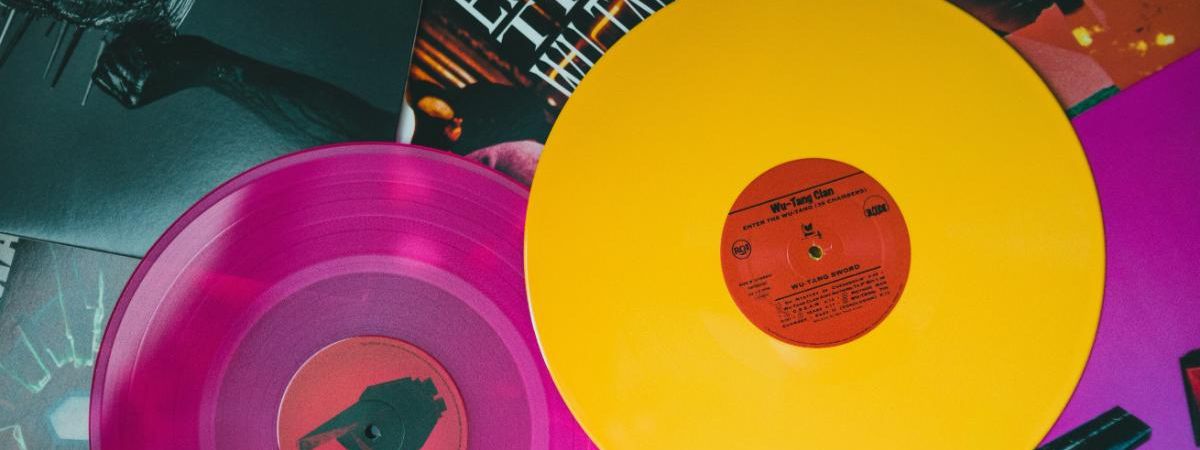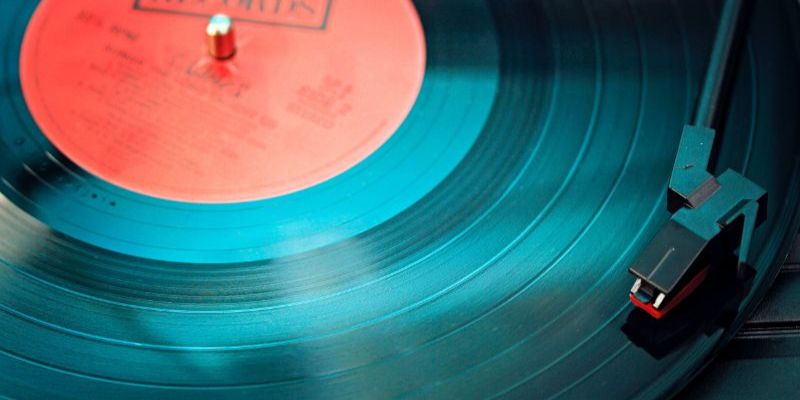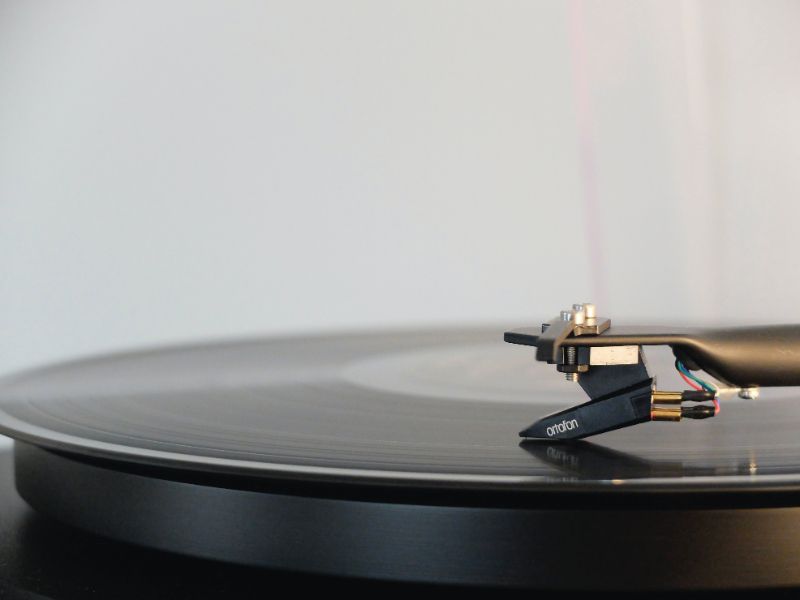Skip to the good bit
ToggleWhen vinyl records first came onto the scene, they could produce speeds up to 78RPM (revolutions per minute) and were around 10” in size. This was great for playing music every day, but due to the size of the vinyl, only around three minutes of music could be stored on each side.
A lot has changed since then, allowing for higher quality music for longer lengths of time. However, this makes purchasing the right size confusing when vinyl collecting. This guide unravels all there is to know about vinyl record sizes, helping you to know which one to buy.
How does vinyl work?
Much thought and care goes into making vinyl to ensure it works properly. Record players need to convert the vibrations made from the grooves in the vinyl to sound. If the grooves aren’t intact, the sound quality will become distorted. A perfectly made vinyl will produce a continuous sound without loud crackles, scratches, or pops.
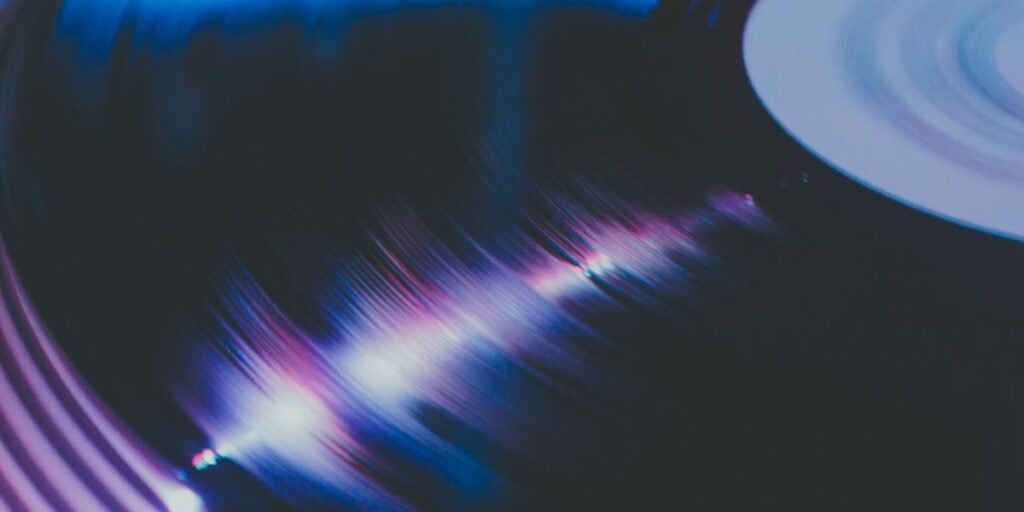
What speed do vinyl records go?
Every vinyl record will have a specific RPM (revolutions per minute). This refers to how often the record will spin in one minute while playing. Generally speaking, the slower a record turns, the better it will sound. This is why most older records are made at 78 RPM, while newer ones are made at 33 RPM. This will also vary depending on the size of the record. Don’t worry, though; there are only three speeds available:
– 33 RPM
– 45 RPM
– 78 RPM
What size vinyl are there?
It’s pretty easy to tell when one vinyl record is bigger than another, but why is this the case? The size of the record refers to how much music can be stored on it. If too many songs are stored on a smaller vinyl, the grooves will become cramped and affect the audio quality. The three main sizes of vinyl available are:
– 7-inch
– 10-inch
– 12-inch.
7-inch vinyl records
The smallest vinyl size around is 7”. It is much more cost-effective to make and purchase than other-sized vinyl. However, this vinyl can only store around five minutes’ worth of music due to its small size.
10-inch vinyl records
It’s rare to come across 10” vinyl these days as most were pressed before the 1950s. 10” records play at an uncommon 78 RPM and can hold around three minutes’ worth of music per side. Very few songs are under three minutes anymore, so you’ll unlikely come across this sized vinyl unless you browse old boxes.
More information: What is RPM?
12-inch vinyl records
The largest and most commonly used vinyl record size is 12”. Each side of a 12” record can store around 22 minutes of music, making this size far more compatible with full-length albums. 12-inch vinyl usually spins at 33 RPM, but those with fewer tracks might spin at 45 RPM.
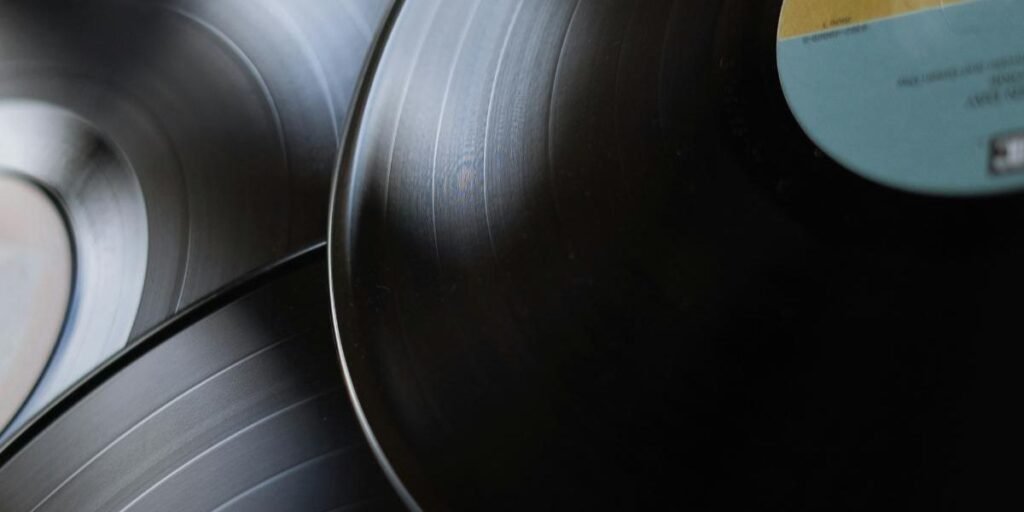
Vinyl Speed, Size & Storage Summary
| Size | Speed | Storage |
| 12-inch | 33 RPM (sometimes 45) | 22 mins each side |
| 10-inch | 78 RPM | 3 mins each side |
| 7-inch | 45 RPM | 5 mins each side |
How much do vinyl records weigh?
Although not observed as much, the weight of the vinyl should also be considered if you’re serious about vinyl collecting. The weight will determine how compatible the vinyl will be with different turntables. The heavier (thicker) the disk, the less the grooves will deteriorate. This means you’ll get to enjoy your favorite records for longer.
Introducing the 180-gram vinyl
The majority of vinyl records weigh between 120 and 140 grams, which is perfectly fine for the average player. However, for audiophiles, your records might deteriorate pretty quickly. This is why the exciting news of 180-gram vinyl has been so greatly welcomed!
A 180-gram vinyl means the grooves are thicker, allowing for more play and enjoyment. This type of vinyl is also less susceptible to snapping and bending.
No matter the size or weight of your vinyl, it will deteriorate over time. This sadly can’t be avoided. This is why handling your vinyl records and record player with great care is so important.
Inclusive sizes for modern-day
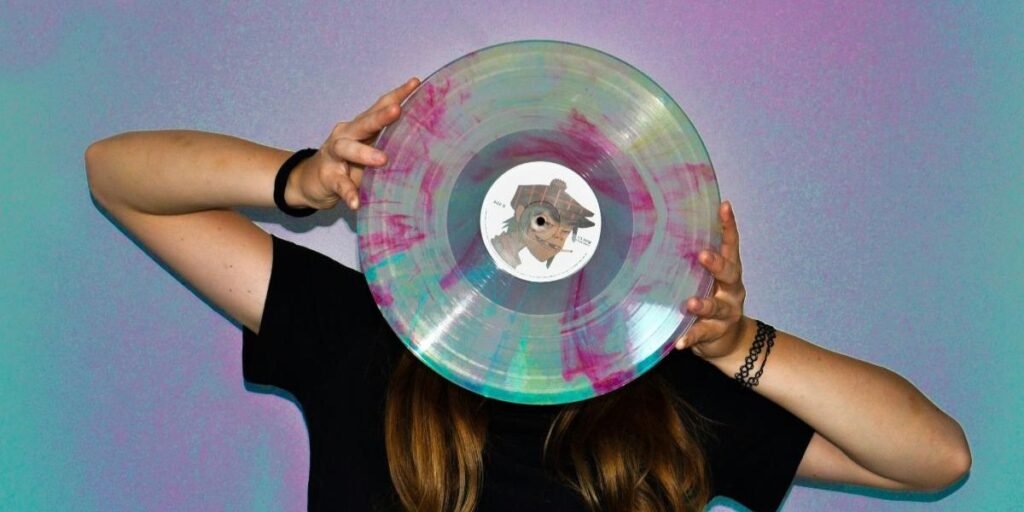
Nowadays, records are typically made to be the same size and speed to be compatible with all turntables and players. 12-inch records are the most popular, and you’ll usually find that they play at 33 RPM (unless they are an EP). 7-inch records are also compatible with most players, allowing for an affordable option to remain available.
While some newer record players have the option for 78 RPM, you’ll unlikely find a 10-inch record supporting these speeds. This is why your player doesn’t need to support this speed. This is great to know if you are searching for gifts for vinyl lovers, they’ll appreciate that you did your research.
Wrapping up
To sum up, modern-day vinyl records are either 12-inch or 7-inch and spin at 33 or 45 RPM. The inches refer to the diameter of the record, and the RPM refers to how many times it spins in a minute. The size and speed, together, determine how much music can be played on the record. This is why larger records are so popular, as they store more music!

